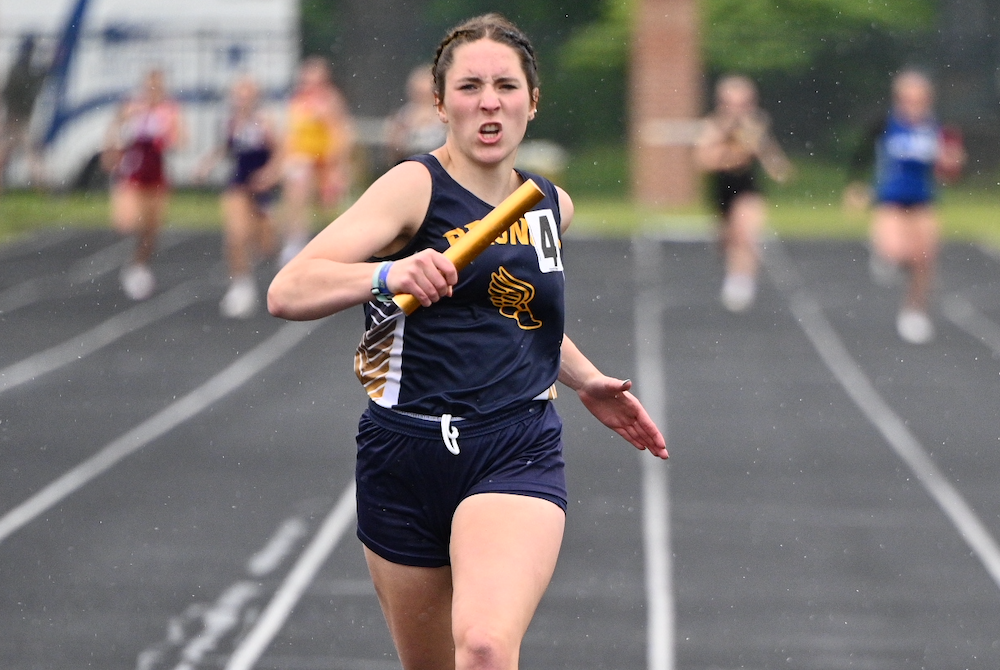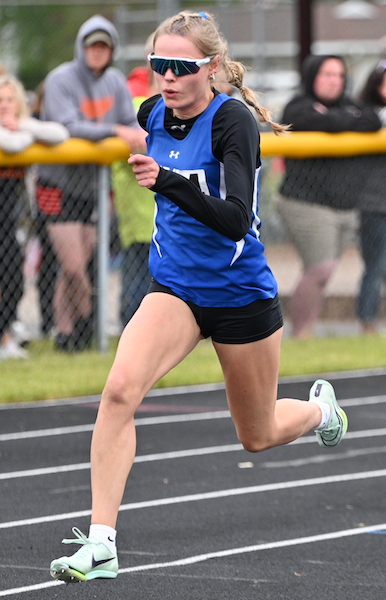
Add, Subtract, Divide, Multiply: MHSAA Not Alone
July 25, 2017
By Rob Kaminski
MHSAA benchmarks editor
This is the third part in a series on MHSAA tournament classification, past and present, that will be published over the next two weeks. This series originally ran in this spring's edition of MHSAA benchmarks.
As the MHSAA faces its most recent classification task with 8-Player Football, and opinions continue to swirl about as to the method, timeframe, location and other procedures, a look around the country provides plenty of company among state association brethren factoring variables into their own equations.
In the Pacific Northwest, the Oregon School Activities Association Football Playoffs are under public scrutiny as leadership ponders a five or six classification format beginning with the 2018-19 school year.
The OSAA has crowned six champions on the gridiron since 2006-07. Many of the state’s smaller schools would like to keep it that way, while larger schools lean toward a five-classification system, citing larger leagues, ease of travel and credibility to state championships as the advantages.
Still others would prefer more than six classes, pointing to safety issues and the opportunity to increase participation numbers as positives.
Moving southeast of Oregon, the Nevada Interscholastic Activities Association recently voted to hold serve on a classification proposal that was volleyed to the membership.
However, changes still could be forthcoming by as early as the 2018-19 season which would add a fifth classification in more populated southern Nevada while allowing northern schools to participate in four classifications. Such divisions could mean no state championship for the fifth class in southern Nevada.
Because of that, the NIAA wants equal numbers of schools in each classification on both ends of the state. Complicating the issue is the fact that the 24 largest schools in the state, by enrollment, are all in Clark County in Southern Nevada.
Across Nevada’s border into Arizona, charter schools are asking the Arizona Interscholastic Association to reconsider classification that was voted upon and approved in September 2015. That agreement called for the largest 33 percent of charter schools by enrollment to be placed in the state’s largest school classification, 3A, the middle 33 percent into 2A, and the smallest 33 percent into 1A.
Less than two years later the charter schools have had a change of heart and have asked to be considered the same as other Arizona public schools and be placed appropriately by enrollment beginning with the 2018-19 school year.
The situation in Arizona further illustrates how the public/private debate that all state associations have faced throughout existence now has the added dynamic of rapidly growing charter schools in today’s educational system, along with virtual school enrollment.
In the nation’s heartland, Nebraska has retooled its football classifications by using enrollment of boys students only in its schools rather than total enrollment. The Nebraska School Activities Association football-playing schools will kick off the 2018 season using this alignment.
Nebraska has three classes of 11-player football, with the smallest class divided in two, Class C-1 and C-2. The state also will have 8-player football for boys enrollments under 47, and the NSAA will sponsor a new 6-player tournament in 2018 for schools with 27 or fewer boys.
“This is a good proposal because some schools have a sizable imbalance between the number of boys and girls, and there’s a large gap (in enrollment) between the largest and smallest schools in Classes A and B,” NSAA executive director Jim Tenopir said. “I think this addresses both of those concerns.”
Swimmers in Georgia, meanwhile, will feel like they are moving with the current, rather than upstream in 2017-18, as the Georgia High School Association recently doubled the number of team championship events from two to four.
Swim enthusiasts can also count on longer days at the finals, as the top 30 finishers from the prelims will advance to the finals instead of 20, and all championship events will have three heats versus two.

Bark River-Harris Lands 3-Peat, Shamion Joins Elite 4-Event Winners Club
By
John Vrancic
Special for MHSAA.com
June 2, 2024
KINGSFORD — The Bark River-Harris girls completed their season-long mission here Saturday, earning their third straight Upper Peninsula Division 2 track & field championship with 127½ points.
West Iron County brought home the runner-up trophy with 82, and third-place Ishpeming had 71.
“The girls have been working hard for this,” BR-H coach Jason Lockwood said. “Three U.P. titles under their belt is incredible. Everybody contributed, which is instrumental in putting up that many points.”
BR-H senior and Bay College basketball recruit Lauren Zawada captured the 100-meter hurdles in 17.74 seconds and 300s (50.92) and helped the Broncos win the 1,600 relay at 4 minutes, 24.4 seconds.
“My starts are what helped me this time,” she said. “That was my first individual U.P. title, which gives me a pretty good feeling. I’m pretty excited.”
Fellow senior and Bay College basketball recruit Mckenzie Hoffmeyer won long jump at 16 feet, ½ inch, helped the Broncos win the 800 relay (1:49.92) and placed second in the 100 (13.03) and 200 in a personal-best 26.52.
“Even though I didn’t win the 100 or 200, I still got points for the team,” she said. “It feels pretty awesome for us to come together and win this three times in a row.”
Hoffmeyer was runner-up to West Iron County senior Danica Shamion, who took high jump with a record 5-1, the 100 at 12.65 and also set U.P. records in the 200 (26.17) and 400 (56.94). She’s one of just nine girls to win four individual events at a Track & Field Finals.
 Shamion’s U.P. records took place four days after she set school records in the 200 (25.79) and 400 (56.74) and high jump (5-5) at Houghton.
Shamion’s U.P. records took place four days after she set school records in the 200 (25.79) and 400 (56.74) and high jump (5-5) at Houghton.
“I went out with a bang, which is something I wanted to do as a freshman,” she said. “I kept thinking, ‘Take it one step at a time.’ The high jump runway was a little slippery (during brief rainfall). It was hard to get your grip.”
BR-H junior Marissa Ives, also part of the 800 relay, took third in the 200 (27.42) and fourth in the 100 (13.5).
“I think we did pretty good for having a young team (in the 800 relay),” she said. “The rain felt good during the race. It makes it a little harder coming out of the blocks, but it cools you off.”
Senior Julia Olson, who helped the Broncos win the 1,600 relay, set school records while taking fourth in the 400 (1:00.54) and 800 (2:29.2).
“This is honestly rewarding,” Olson said. “Part of this is due to our training in the weight room during the offseason. It really paid off. It’s also good to know I had good competition on top of it.”
Pickford sophomore Talya Schreiber won the 1,600 (5:19.16) and 3,200 (11:49.86) and was runner-up in the 800 (2:27.88).
“Lola (Korpi) is a great runner,” she said. “It definitely helps to have her here to push me. This feels really good. I’m happy to be here for our team. The atmosphere is awesome. Everyone is so nice.”
Ishpeming senior and Northern Michigan University recruit Korpi won the 800 (2:26.36) and placed second in the 1,600 (in a school-record 5:20.19) and 3,200 (12:12.63).
“I let her creep away from me a little too much and I couldn’t quite catch her in the 1,600,” said Korpi, who capped her career with 10 individual Track Finals titles. “She started her kick, too.
“I’m obviously happy with another school record. I feel I left my mark. I’m also happy for Talya. She worked so hard and helped me get my PR. Second place isn’t bad. I’m happy where I am.”
Sophomore Mya Hemmer added a first for Ishpeming in discus (114-6) and second in shot put (33-5¼), and Ironwood sophomore Emma Wardon took first in shot (34-5).
PHOTOS (Top) Bark River-Harris's Carli Erickson crosses the finish line far ahead of her competition in the 800 Relay. Other members of the winning team were Mckenzie Hoffmeyer, Julia Nault, and Marissa Ives. (Middle) West Iron County's Danica Shamion starts the 400, which she eventually wins. (Click for more from Cara Kamps/RunMichigan.com.)

